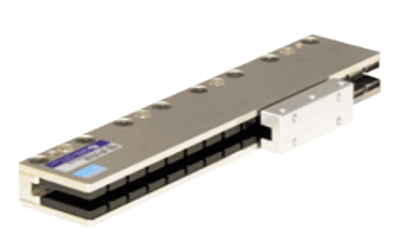What Is a Linear Motor?

A linear motor is an electric motor that produces motion in a straight line, unlike conventional motors that generate rotational motion. It operates on the principle of magnetism, utilizing the attraction and repulsion of magnets or the Lorentz force to create propulsive force. This design allows for direct linear movement, eliminating the need for complex mechanisms required by traditional motors to convert rotational motion to linear motion.
Uses of Linear Motors
Linear motors are widely used in various applications, from linear motor cars, such as the linear bullet train which achieves high speeds with minimal frictional loss thanks to magnetic repulsion, to industrial equipment requiring precision, such as machine tools and semiconductor manufacturing equipment. They are also found in consumer products like electric curtains, shaving machines, camera autofocus systems, and even in the food industry, exemplified by revolving sushi restaurants.
Principle of Linear Motors
The operation of linear motors relies on magnetic attraction, repulsion, or the Lorentz force, akin to conventional motors but designed to produce linear instead of rotational motion. There are several types of linear motors, including linear induction motors, linear synchronous motors, linear DC motors, and linear stepping motors, each based on different principles of operation.
1. Linear Induction Motor
Utilizes electromagnetic induction for propulsion, driving an electromagnet across a magnet-aligned NS-SN using electric current. This type is preferred for industrial applications requiring high precision.
2. Linear Synchronous Motor
Operates on magnetic attraction and repulsion, with motion generated by altering the magnetic poles of fixed magnets in sync with movable electromagnets. This method is highly efficient, making it suitable for linear motor cars to reduce power consumption, with magnetic levitation trains using superconducting magnets to further minimize energy loss.
3. Other Methods
Linear DC motors and linear stepping motors are employed in actuators and precision control of optical equipment, respectively. Linear piezoelectric motors, though less efficient, offer high precision control and are used in precision machinery.
Other Information on Linear Motors
1. Speed and Precision of Linear Motors
Linear motors offer significant benefits in speed and precision, eliminating the need for reduction mechanisms and allowing for accurate positioning. They can operate over long distances and can be configured with multiple units working in unison. Despite challenges in control, thrust, and maintenance, advancements are continually made, increasing their application in precision tools like grinders and lathes, and contributing to environmental preservation efforts.
2. Cooling of Superconductive Linear Motors
Superconductive linear motors, essential for magnetic levitation trains, utilize superconducting magnets that operate at low temperatures with zero electrical resistance, thereby creating a powerful magnetic field without energy loss. Advances in cooling technologies, moving away from liquid helium to materials like bismuth-based copper oxide, allow for higher operational temperatures and more efficient, compact cooling systems, paving the way for the development of high-temperature superconducting magnets.